| ________________
CM . . .
. Volume XXIV Number 19. . . .January 19, 2018

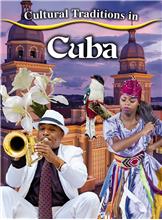 |
Cultural Traditions in Cuba. (Cultural Traditions in My World).
Kylie Burns.
St. Catharines, ON: Crabtree, 2018.
32 pp., pbk., hc. & html, $9.95 (pbk.), $25.95 (List RLB), $20.76 (School RLB).
ISBN 978-0-7787-8102-8 (pbk.), ISBN-978-0-7787-8094-6 (RLB), ISBN 978-1-4271-1949-0 (html).
Subject Headings:
Festivals-Cuba-Juvenile literature.
Holidays-Cuba-Juvenile literature.
Cuba-Social life and customs-Juvenile literature.
Grades 2-4 / Ages 7-9.
Review by Gail Hamilton.
*** /4
|
| |
|
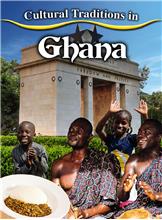 |
Cultural Traditions in Ghana. (Cultural Traditions in My World).
Joan Marie Galat.
St. Catharines, ON: Crabtree, 2018.
32 pp., pbk., hc. & html, $9.95 (pbk.), $25.95 (List RLB), $20.76 (School RLB).
ISBN 978-0-7787-8103-5 (pbk.), ISBN-978-0-7787-8095-3 (RLB), ISBN 978-1-4271-1950-6 (html).
Subject Headings:
Festivals-Ghana-Juvenile literature.
Holidays-Ghana-Juvenile literature.
Ghana-Social life and customs-Juvenile literature.
Grades 2-4 / Ages 7-9.
Review by Gail Hamilton.
*** /4
|
| |
|
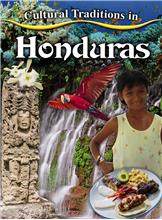 |
Cultural Traditions in Honduras. (Cultural Traditions in My World).
Rebecca Sjonger.
St. Catharines, ON: Crabtree, 2018.
32 pp., pbk., hc. & html, $9.95 (pbk.), $25.95 (List RLB), $20.76 (School RLB).
ISBN 978-0-7787-8104-3 (pbk.), ISBN-978-0-7787-8096-0 (RLB), ISBN 978-1-4271-1951-3 (html).
Subject Headings:
Festivals-Honduras-Juvenile literature.
Holidays-Honduras-Juvenile literature.
Honduras-Social life and customs-Juvenile literature.
Grades 2-4 / Ages 7-9.
Review by Gail Hamilton.
*** /4
|
| |
|
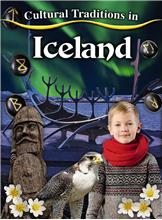 |
Cultural Traditions in Iceland. (Cultural Traditions in My World).
Cynthia O’Brien.
St. Catharines, ON: Crabtree, 2018.
32 pp., pbk., hc. & html, $9.95 (pbk.), $25.95 (List RLB), $20.76 (School RLB).
ISBN 978-0-7787-8105-9 (pbk.), ISBN-978-0-7787-8097-7 (RLB), ISBN 978-1-4271-1952-0 (html).
Subject Headings:
Festivals-Iceland-Juvenile literature.
Holidays-Iceland-Juvenile literature.
Iceland-Social life and customs-Juvenile literature.
Grades 2-4 / Ages 7-9.
Review by Gail Hamilton.
*** /4
|
| |
|
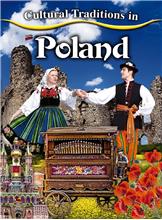 |
Cultural Traditions in Poland. (Cultural Traditions in My World).
Linda Barghoorn.
St. Catharines, ON: Crabtree, 2018.
32 pp., pbk., hc. & html, $9.95 (pbk.), $25.95 (List RLB), $20.76 (School RLB).
ISBN 978-0-7787-8106-6 (pbk.), ISBN-978-0-7787-8098-4 (RLB), ISBN 978-1-4271-1953-7 (html).
Subject Headings:
Festivals-Poland-Juvenile literature.
Holidays-Poland-Juvenile literature.
Poland-Social life and customs-Juvenile literature.
Grades 2-4 / Ages 7-9.
Review by Gail Hamilton.
*** /4
|
| |
|
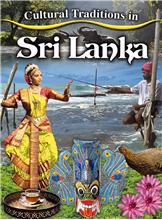 |
Cultural Traditions in Sri Lanka. (Cultural Traditions in My World).
Cynthia O’Brien.
St. Catharines, ON: Crabtree, 2018.
32 pp., pbk., hc. & html, $9.95 (pbk.), $25.95 (List RLB), $20.76 (School RLB).
ISBN 978-0-7787-8107-3 (pbk.), ISBN-978-0-7787-8099-1 (RLB), ISBN 978-1-4271-1954-4 (html).
Subject Headings:
Festivals-Sri Lanka-Juvenile literature.
Holidays-Sri Lanka-Juvenile literature.
Sri Lanka-Social life and customs-Juvenile literature.
Grades 2-4 / Ages 7-9.
Review by Gail Hamilton.
*** /4
|
| |
|
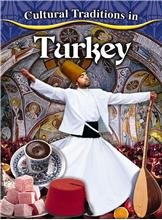 |
Cultural Traditions in Turkey. (Cultural Traditions in My World).
Joan Marie Galat.
St. Catharines, ON: Crabtree, 2018.
32 pp., pbk., hc. & html, $9.95 (pbk.), $25.95 (List RLB), $20.76 (School RLB).
ISBN 978-0-7787-8108-0 (pbk.), ISBN-978-0-7787-8100-4 (RLB), ISBN 978-1-4271-1955-1 (html).
Subject Headings:
Festivals-Turkey-Juvenile literature.
Holidays-Turkey-Juvenile literature.
Turkey-Social life and customs-Juvenile literature.
Grades 2-4 / Ages 7-9.
Review by Gail Hamilton.
*** /4
|
| |
|
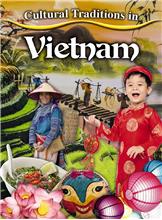 |
Cultural Traditions in Vietnam. (Cultural Traditions in My World).
Julia Labrie.
St. Catharines, ON: Crabtree, 2018.
32 pp., pbk., hc. & html, $9.95 (pbk.), $25.95 (List RLB), $20.76 (School RLB).
ISBN 978-0-7787-8109-7 (pbk.), ISBN-978-0-7787-8101-1 (RLB), ISBN 978-1-4271-1956-8 (html).
Subject Headings:
Festivals-Vietnam-Juvenile literature.
Holidays-Vietnam-Juvenile literature.
Vietnam-Social life and customs-Juvenile literature.
Grades 2-4 / Ages 7-9.
Review by Gail Hamilton.
*** /4
|
| |
|

excerpt:
One of Sri Lanka’s most dazzling celebrations takes place in Kandy. It is the Esala Perahara, or Festival of the Tooth. The city’s main temple holds Buddha’s tooth. In ancient belief, the tooth has the power to bring rain. Every July or August, Buddhists and many others gather for ten days to honor the tooth.
Thousands of performers take part in the nightly parades. There are elephants, drumming, dancing, and singing. The elephants are dressed in colorful silk robes and lights, shown below.
(From Cultural Traditions in Sri Lanka.)
With the addition of these new titles, the "Cultural Traditions in My World" series now numbers 33 books. Designed for young readers, each title discusses the religious, family, seasonal and national holidays of a specific country and the historical significance, foods, customs and celebrations associated with them. The books, each having 13-14 chapters, begin with a brief introduction of the country- its location, population, official languages or religions- and are arranged chronologically, starting with the first holiday of January (usually New Year's). One or two holidays are featured per double-page spread. Some of the cultural traditions date back to ancient times while others are relatively recent. What readers will find interesting is that no matter where they are celebrated, many of the holidays are quite similar around the world. For instance, several countries have holidays that honour workers, celebrate the country's independence, or reflect on the sacrifices made by their military in times of conflict. Many involve music and parades while others give thanks for a bountiful harvest or celebrate milestone events in a person’s life, such as birthdays and weddings. Text is printed in a large, simple font; "Did You Know?" text boxes provide additional information. Bright, colourful covers attract the reader's attention. The appealing illustrations consist mainly of colour photographs, some black and white archival photographs and a few maps. A table of contents, a glossary and an index are also included.
Cuba’s cultural traditions are influenced by the Spanish, African, French, South American and Taino (indigenous) people. In Cultural Traditions in Cuba, readers will learn about the country’s largest carnival, the Carnival of Santiago de Cuba, which lasts for 10 days. What began as a Christian festival has since morphed into a celebration of Cuba’s ethnic groups and the Revolution and is characterized by parties, parades and colourful costumes. Las Parrandos, a Christmas festival, also lasts 10 days and is known for its gigantic fireworks competition. Music and dances, such as the Mambo, Rumba, Cha Cha Cha, Salsa and Pachanga, play an important part in Cuban culture. One interesting tradition is related to weddings: the wedding cake has several ribbons trailing from it, one of which has a ring attached to the part of the ribbon hidden in the cake. Unmarried young ladies are invited to pull on a ribbon and the one who finds the ring is predicted to be the next woman to be married.
Located in western Africa, the Republic of Ghana is home to more than 27 million people with 50 different ethnic groups. Among the many holidays and festivals in Cultural Traditions in Ghana, a few stand out. After seven days of being protected indoors, a newborn infant is carried outside for a naming ceremony. On Naming Day, Akan babies receive three or four names, the first of which is based on the day that they were born. One of the oldest festivals is the Aboakyer (or deer-catching) Festival, in which two groups dressed in traditional battle clothes compete to capture a live deer. The week-long Odwira Festival gives thanks for the harvest and also honours those who have died in the past year. Chiefs lead a durbar (parade) and people present gifts to the spirits of their ancestors. One of Ghana’s traditional dishes is snail soup, often served at Christmas feasts. Interestingly, the world’s largest snails come from Ghana and can weigh as much as a baseball.
Honduras is part of Central America. Its culture has Spanish, African and indigenous influences, and many of the holidays are based on Roman Catholicism. Some of the celebrations featured in Cultural Traditions in Honduras include the Festival of Suyapa, honouring the patron saint of Honduras with fireworks and live music; Semana Santa (Holy Week) when artists decorate the streets with brightly coloured sawdust and sand carpets which people shape into Easter scenes; Teachers’ Day, which honours a priest who helped found the first Honduran university in the 1800s; and Día de la Roza which celebrates all of the country’s cultures.
Land of volcanoes, hot springs and lava fields, Iceland is home to the descendants of the Norse (Viking) people. Its traditions are based on Norse history and folklore, the Lutheran religion, and American and Danish influences. A few of the holidays mentioned in Cultural Traditions in Iceland include Threttándinn (Twelfth Night) which marks the end of the Christmas season with singing, dancing, bonfires and fireworks. Some children dress as the legendary- and usually hidden- Huldufólk who are said to move from their old homes to new ones at this time. Another interesting celebration is Bolludagur (Bun Day), two days before Lent when Icelanders buy each other sweet cream buns. This is followed by Sprengidagur (Bursting Day) when people eat so much food, typically salted lamb and split pea soup, that they feel as if they might burst. Part of the Festival of the Sea, Fisherman’s Day is characterized by rowing competitions and boat races; Midsummer Night, the summer solstice, is full of superstition and folklore, when, it is said, seals become human (Selkies), cows speak, elves appear and dew has healing powers.
Cultural Traditions in Poland highlights several of the country’s well-known customs. For instance, at a wedding, guests throw coins at the bride and groom which the couple must pick up for good luck. Their parents give wedding guests pieces of salted bread, symbolizing good fortune in dealing with the challenges that life may bring. All Saint’s Day, on November 1st, honours family members who have died. Wreaths and candles are placed on graves, then back at home, families gather to share a delicious meal. Extra places are set at the dinner table for the souls of the deceased, fires are lit along village roads to guide the souls home, and doors and windows are left open to allow the souls entry to the house. At Epiphany, priests visit houses and mark the doors with a K and an M and a B, the initials of the Three Wise men, to protect the homes from bad luck.
Several different religions are represented in Sri Lanka - Buddhism, Christianity, Islam and Hinduism - so many of the traditions are over 2,000 years old. Some examples are Poya Days, Buddhist celebrations held on full moon days. Businesses are closed, the selling or eating of meat is prohibited, people fast, pray at temples, and end the day with feasting, music and parades. On Vesak, a Poya Day in May, people honour the Buddha by creating large painted wooden platforms called pandals which represent scenes from the Buddha’s life. These can be 21 meters tall and lit by 50,000 lightbulbs. A Hindu festival featured in Cultural Traditions in Sri Lanka honours the Hindu god Shiva. People bring gifts to Shiva at the temple- incense for riches, fruit for long life, and lit clay lamps for knowledge.
Most Turks are Sunni Muslims whose holidays follow the lunar calendar. One of the oldest festivals is the Kirkpinar Festival, a series of wrestling matches in which the participants, more than 1,000 men and boys, first cover their bodies in olive oil and bands play Turkish instruments during the matches. Other festivals mentioned in Cultural Traditions in Turkey include the Feast of the Sacrifice, remembering the story of the Muslim god Allah asking Abraham to prove his faith by sacrificing his son, Ibrahim. Traditional foods served at this feast are meat kebabs, stuffed vine leaves, and bumbar dolmasi (grilled intestines stuffed with liver). Many of Turkey’s holidays are devoted to its first president while one commemorates the death of Rumi, a poet who encouraged peace and founded the Mevlevi Order, a religious group. At this, the largest of Turkey’s festivals, there are poetry readings, concerts and a dance performed by Mevlevi members called whirling dervishes. (A sema ceremony is mentioned, but, unfortunately, not explained. Had it been, readers would have better understood why the whirling dervishes spin.)
In Vietnam the cultural influences are Chinese and French (though the connection to France is not explained). Cultural Traditions in Vietnam highlights, among other holidays, the Vietnamese new year called Tet during which the people eat rice cakes and a candied fruit snack and give children good luck red envelopes with money inside. Readers will find interesting that everyone celebrates their birthdays at Tet, so even a baby born the day before will turn one year old at Tet! The week-long Pagoda Festival honours a Buddhist monk who helped people by treating diseases, but he also invented many games for children. During the Pagoda Festival, people take in a water puppet show (also invented by the monk). Puppeteers, hidden from view from the audience, stand in waist-deep water behind a screen and control the puppets, so, essentially, the water becomes the “stage”.
Generally speaking, the "Cultural Traditions in My World" series meets its objective- that is, to promote an appreciation of other cultures around the globe. That said, there are numerous titles already in print on the same topic, and this series adds nothing new to the mix.
Recommended.
Gail Hamilton is a retired teacher-librarian in Winnipeg, MB.

© CM Association
CC BY-NC-ND
Hosted by:
University of Manitoba
ISSN 1201-9364
|
This Creative Commons license allows you to download the review and share it with others as long as you credit the CM Association. You cannot change the review in any way or use it commercially.
Commercial use is available through a contract with the CM Association. This Creative Commons license allows publishers whose works are being reviewed to download and share said CM reviews provided you credit the CM Association. |
Next Review | Table of Contents for This Issue - January 19, 2018.
CM Home | Back Issues | Search | CM Archive | Profiles Archive
|







